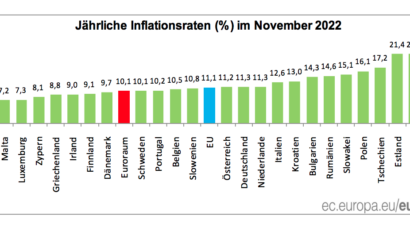
France: Mass protests against higher retirement age
France’s President Emmanuel Macron wants to raise the retirement age by two years. However, 72 percent of French people are against the pension reform—and the trend is rising. Since mid-January, hundreds of thousands of people have taken to the streets and workers have gone on strike throughout the country. In addition, there is a new form of protest: the union from the energy sector supplied schools, hospitals and poor families with free electricity for one day. In this way, the striking workers want to demonstrate their power and prevent the raising of the retirement age.
They call it a “Robin Hood action”: On January 26, 2023, trade unionist Sébastien Menesplier announced that on that day free electricity and gas would flow to schools, hospitals, social buildings and poor families. In the mass strikes in France, quite a few employees from the energy sector have not only stopped working, according to the report—but have used the levers they are sitting on to create a piece of social justice. “We decided this collectively in a general assembly,” Sébastien Menesplier told the BFMTV television channel. He is president of the National Federation of Mines and Energy (FNME) of the CGT union.
“We have given a favorable tariff to small traders such as bakers or artisans,” he announced. People who have had their electricity or gas cut off because of unpaid bills—”by unscrupulous suppliers and despite the winter,” Menesplier said—were now receiving gas and electricity again.
[embedded content]
“This is just the beginning,” said Fabrice Coudour, general secretary of the CGT-Energie union. “We can carry out Robin Hood actions at any moment.” French energy company EDF left a press inquiry from Kontrast unanswered—so neither confirmed nor denied the accounts.
Fourteen nuclear reactors out of 56 are at a standstill, refineries and gas stations are paralyzed all over the country, trains are not running, schools are not teaching, and employees have also stopped work in factories such as those of the canning company Bonduelles. Some are only striking selectively, on days of the general strike, which kicked off Jan. 19. Others continue to strike without interruption. The pressure of the population on politics is enormous—and also shows that there is more at stake in social justice in general than just this one pension reform. That is the bone of contention.
Trigger of the protests: attack on a central social achievement
It was exactly three years ago—when the masses on France’s streets had already prevented it once with strikes: the increase of the retirement age to 64. The country was at a standstill, the higher retirement age was prevented. Now the issue is back on the table—and the French population is once again on the streets. President Emmanuel Macron and Prime Minister Elizabeth Borne want to raise the retirement age from 62 to 64.
For some neighboring countries, retirement at 64 may sound downright idyllic—in Germany, for example, the current retirement age is 67, in Austria 65. In France, on the other hand, the increase to 64 is considered virtually sacrilegious. Why?
On the one hand, the low retirement age stands for a social achievement from the 1980s under then President François Mitterand: Anyone who attacks this achievement is, in the eyes of the French, attacking the entire social policy. This has been steadily dismantled by the governments of recent years.
Macron’s governments loosened protection against dismissal, cut housing benefits—and abolished the wealth tax. The low entry age therefore has a symbolic value as well as a practical one—less work.
Old-age poverty threatens to increase
It should also be taken into account that the planned pension reform threatens to make old-age poverty even more acute for many people than it already is. People who lose their jobs at the age of 60, for example, or become incapacitated due to physical ailments, are often unable to find new work. But they are then not entitled to a full pension rate. The state saves, those affected suffer.
In particular, people who take parental leave or have been unemployed in between are penalized by this reform—because these years are not counted. Then, in old age, these years are either added on in the form of even more years of working time—or the pension turns out to be particularly low. Since women still take more and longer parental leave than men, the reform would further exacerbate inequality.
Instead, the CGT union argues for higher contributions from working people—but especially from listed companies.
“As a reminder, in 2022, the top 40 listed companies in France made 80 billion euros in profits—an unprecedented peak!” a CGT paper says. That the missing money could be fetched from the super-rich and corporations is one of the main arguments of the opponents:of pension reform.
Despite arrests: Over a million people demonstrated
On January 19, 2023, over one million people took to the streets nationwide. The next large-scale mobilization is scheduled for January 31. In the time in between, however, the protest did not sleep—on the contrary. On many evenings in several cities—Paris, Strasbourg, Nantes—people with CGT flags and in torchlight processions wandered through the cities. A few hundred yellow vests also set off again on their traditional Saturday.
The President of France, Emmanuel Macron, is trying to raise the retirement age from 62 to 64.
So the eight biggest unions across the country called a massive wave of strikes and protests today, with over 200 actions across the country.
pic.twitter.com/WiKOl69nQa
— Read Jackson Rising by @CooperationJXN (@JoshuaPHilll) January 19, 2023
Meanwhile, police repression is evident. Videos from the mass demonstration on Jan. 19 show images of police violence—even apart from that, there are dubious operations. At numerous universities throughout France, students are currently coming together to organize against the pension reform. To this end, “general assemblies” are being held in lecture halls. In Strasbourg and Paris on the Condorcet campus, such general assemblies were stormed by French riot police (CRS). Twenty-nine students were arrested in Paris on January 22 and were forced to hold out for 22 hours in custody, without food or drink. In both cases, the respective university directors ordered the police storming of the student general assembly.
“They want to prevent the student protests from structuring, from students organizing,” said a young woman named Erelle on Twitter—she is part of the anti-capitalist student collective “Raised Fist” (“Poing levé”).
Government wants to push through law without parliamentary approval
Meanwhile, tension is rising at the parliamentary and party political level. Each camp is pulling out all available stops. The government either wants to push the law through as 49-3 – a paragraph that allows a law to be pushed through without a parliamentary vote. Or the law will be pushed through as a purely financial project. Both paragraphs allow for “government bypass” of Parliament, without a vote. Many criticize the procedure as deeply undemocratic.
Meanwhile, the opposition is preparing for resistance from both the right and the left. Both the left-wing Nupes alliance and the extreme right-wing Rassemblement National want to call for a referendum, i.e., to have the French vote on the reform. The crux of the matter is that only one motion may be submitted. The far-right and the left-wing alliance must therefore agree on a text for the motion, or at least endorse the text of their opponents in a vote. A closing of ranks that the left-wing Nupes faction considers unacceptable. Now, the question remains whether the right-wingers will support the motion of the left-wing opponents.
If that happens, however, it remains unlikely that a referendum will actually be held—because ultimately it would require the final approval of the president. For the president, this would be a complete loss of face. According to surveys, 72 percent of French citizens are against the pension reform—and the trend is increasing every week. It is highly unlikely that Macron allows such a referendum.
Nevertheless, the pressure on the government is increasing. After all, the strikes not only bring crowds onto the streets, but also cause very real economic damage. In particular, when gasoline and energy sectors are at a standstill, the economy goes into a tailspin. The next large-scale mobilization is set for January 31. But the French rail union CGT-Cheminots is already announcing that it will go on an indefinite strike starting in mid-February. The fight over pension reform will also be one of endurance.
This work is licensed under the Creative Common License. It can be republished for free, either translated or in the original language. In both cases, please cite / Lea Fauth as the original source/author and set a link to this article on Scoop.me. https://scoop.me/france-retirement-reform/
The rights to the content remain with the original publisher. Läs mer…





